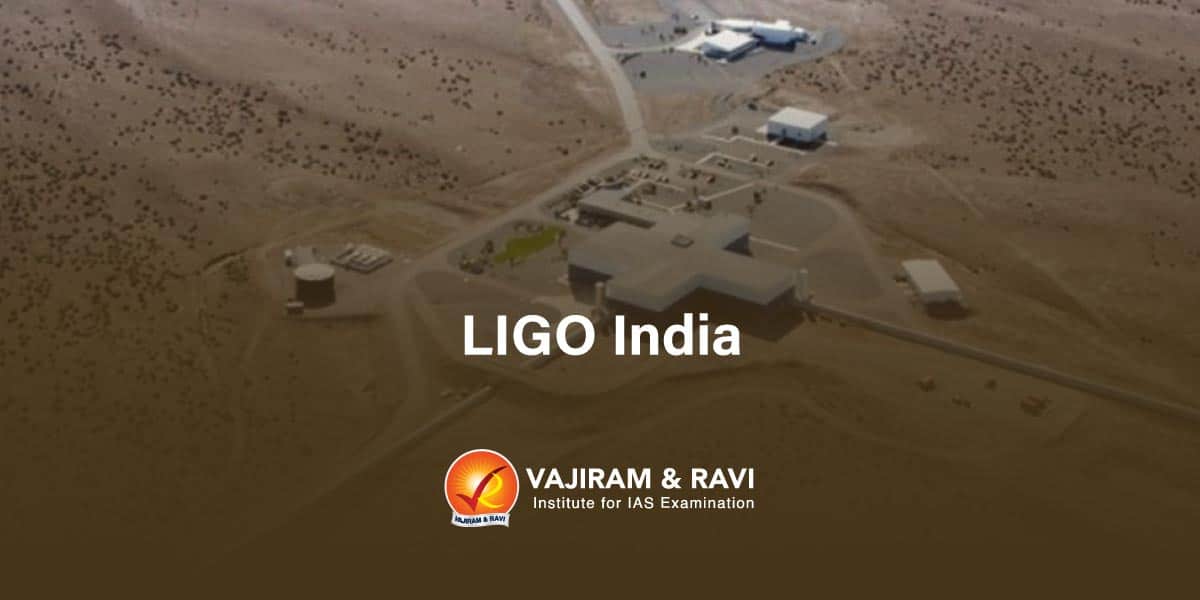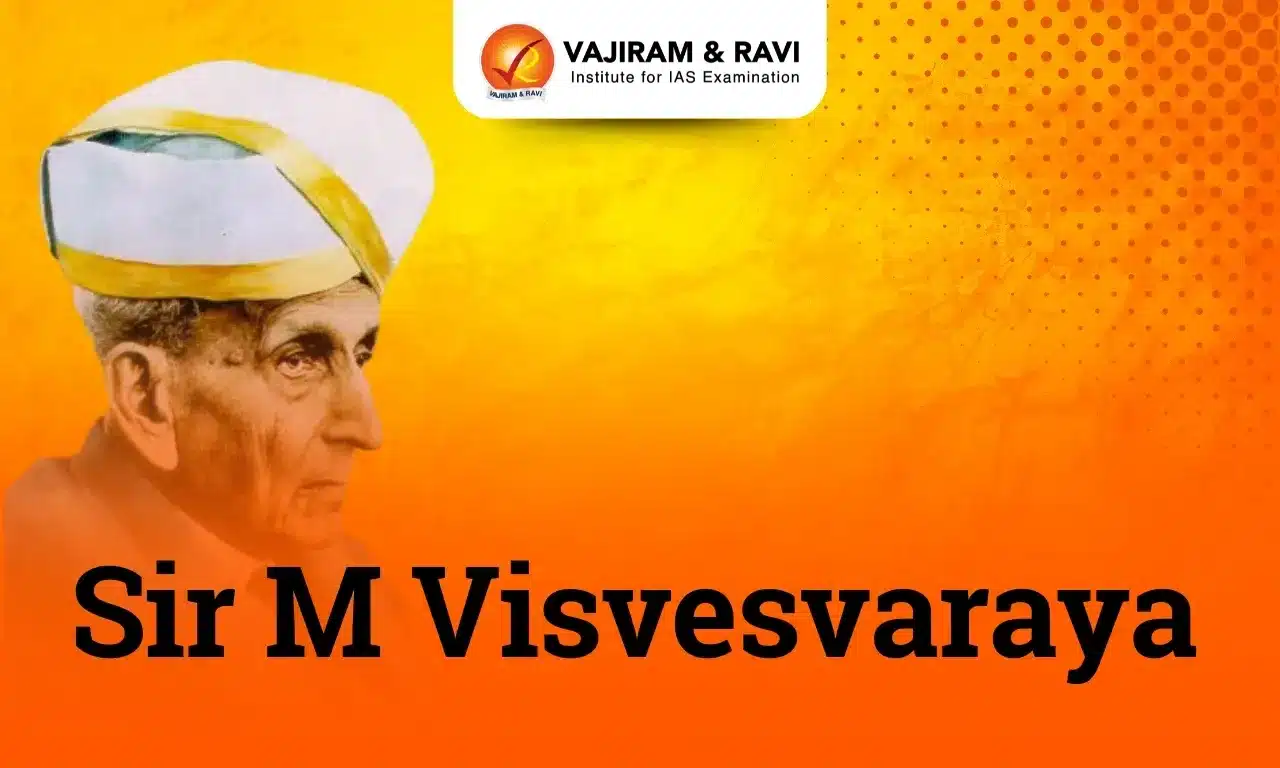The Laser Interferometer Gravitational-Wave Observatory (LIGO) India is a planned observatory to be built in India as a part of the global network. An international consortium of research institutions from India and the LIGO Laboratory in the United States will work together on the LIGO India project.
Gravitational waves are disturbances in the spacetime fabric of the universe and are caused by some of the most violent cosmic events. Predicted by Einstein’s Theory of General Relativity and observed for the first time in 2015 by the Laser Interferometer Gravitational-Wave Observatory, it needs a joint collaboration worldwide for better efficiency in detecting Gravitational waves. LIGO India is one such step in this regard.
What are the Gravitational Waves?
Gravitational waves are the space-time ripples created by massive accelerating objects in such a way that ‘waves’ of undulating space-time propagate in all directions from the source.
- Predicted by Einstein in his General Theory in 1915, it was first observed experimentally in 2015.
- These cosmic ripples travel at the speed of light, carrying information about their origins as well as clues to the nature of gravity.
- Observable GWs can be created by incredibly massive objects with rapid accelerations, such as pairs of neutron stars or black holes orbiting each other.
Sources and Types of Gravitational Waves
Gravitational waves are primarily generated by pairs of black holes or neutron stars orbiting each other or by massive stars exploding at the end of their lives. Astronomers classify these waves into four categories: continuous, compact binary inspiral, stochastic, and burst, depending on the source.
- Continuous Gravitational Waves
- These Gravitational Waves are produced by a single spinning massive object, like a neutron star, due to bumps or imperfections in its spherical shape.
- If the star’s spin rate remains constant, so do the frequency and amplitude of the gravitational waves, resulting in continuous gravitational waves.
- Compact Binary Inspiral Gravitational Waves
- These are created by orbiting pairs of massive and dense objects, such as neutron stars, white dwarf stars, and black holes.
- In this class of “compact binary” systems, there are three subclasses: Binary Neutron Star (BNS) – two neutron stars orbiting each other, Binary Black Hole (BBH) – two black holes orbiting each other and Neutron Star-Black Hole Binary (NSBH) – a neutron star and a black hole orbiting each other.
- Stochastic Gravitational Waves
- Gravitational waves from the early stages of the universe’s evolution are known as stochastic gravitational waves.
- These gravitational waves are produced by a large number of random, independent events that combine to form a cosmic gravitational wave background, much like the Cosmic Microwave Background (CMB), which is most likely the residual light from the Big Bang.
- Burst Gravitational Waves
- Considered as short-duration waves, generated from unknown or unanticipated sources.
- Detecting these waves has the potential to reveal revolutionary information about the universe.
Need to detect Gravitational Waves
In line with other methods and sources such as electromagnetic waves and neutrinos, etc, Gravitational waves can be proved to be a vital source of information about the universe.
- The gravitational wave observatories can detect vibrations (ripples) coming out of the events that occur very far from the detectors, an advancement over electromagnetic astronomy.
- Gravitational waves weakly interact with matter (unlike EM radiation) and travel through the universe unhindered carrying information about their origins without distortion.
- As the Gravitational waves arise from the cosmic catastrophes such as black hole colliding, neutron star merging and even universe creation, their detection enables astronomers to observe the universe in unprecedented ways, providing first glimpses of invisible wonders and enabling unprecedented observations.
Laser Interferometer Gravitational-Wave Observatory (LIGO)
LIGO consists of two identical detectors at Hanford ( LIGO Hanford Observatory) and Livingston (LIGO Livingston Observatory), separated by 3000 km. These detectors work in unison as a single laboratory but can make individual detections.
- LIGO-India is the joint collaboration of India and the USA. It is the sixth such gravitational wave observatory. The other three are the European Virgo Collaboration (in Italy), the Japanese KAGRA, and GEO600 (in Germany).
- This collaboration enhances the efficiency of the search for gravitational waves.
- LIGO or any other gravitational observatory differs fundamentally from a typical astronomical observatory in three ways:
- It is blind to electromagnetic waves.
- It is not required to point at a specific area of the sky or to concentrate starlight. Thus, it doesn’t need any specific location.
- A single detector cannot reliably make a discovery on its own. Thus, the observatories work in tandem.
Structure and Working Principles of LIGO
LIGO is a massive L-shaped instrument with each arm of 4 km length. A steel vacuum tube known as an interferometer is housed inside each arm.
- Through each arm, laser pulses are fired, and they return after hitting a mirror at each end. These pulses’ timing and motion are tracked by a photodetector.
- The pulses won’t arrive on time when a gravitational wave passes by the detector. This signal, along with others like it, can be used to study gravitational waves.
- Gravitational waves from distant galaxies hundreds of millions of light years away can be found by the highly sensitive LIGO instrument.
- For instance, scientists believe that the first gravitational wave detected by LIGO in 2015 was produced by the collision of two black holes about 1.3 billion years ago.
- Space stretches in one direction and simultaneously contracts in the opposite direction as a result of gravitational waves.
- As long as the wave is passing, LIGO experiences this as one arm of the interferometer getting longer while the other gets shorter, then vice versa, back and forth.
- Since the arms are simultaneously changing length in opposite directions, this motion is referred to technically as “Differential Arm” motion or differential displacement.
LIGO India
The LIGO India project is an example of the increasing footprints of Indian science in the world and a dream project of Indian physicists, similar to the INO project. To be completed by 2030, location of the LIGO India observatory is in the Hingoli district of Maharashtra.
- Funding Organisations: The Department of Atomic Energy (DAE) and the Department of Science and Technology (DST) will provide funding for the LIGO-India facilities.
- The National Science Foundation (NSF) – funded LIGO Laboratory (USA) will supply the hardware for a fully functional LIGO interferometer, technical data on its design, installation, and commissioning, training, and assistance with installation and commissioning, as well as the specifications and designs for the necessary infrastructure (including the vacuum system).
- Institutions involved: There are four organisations in India that are in charge of the project – Directorate of Construction, Services and Estate Management under Department of Atomic Energy, and three dedicated Science and Technology Institutions in India – Institute for Plasma Research (IPR), Inter-University Centre for Astronomy and Astrophysics (IUCAA), and the Raja Ramanna Centre for Advanced Technology (RRCAT).
- Collaborating Institutions: The project’s research and development will involve numerous other research institutions from India and abroad. Through the LIGO-India Scientific Collaboration (LISC), Indian institutions will participate in the LIGO Scientific Collaboration (LSC).
Importance of LIGO-India Project
- According to experts involved in the LIGO India project, the new LIGO observatory in India, which will be the southernmost gravitational wave detector in the world, is poised to make discoveries about the universe.
- Tracing the genesis of various cosmic events in the sky is greatly impacted by its special geographic location.
- LIGO India will not only advance science but also unite a diverse group of people, advancing the nation’s advancement in astronomy as well as in the development of numerous cutting-edge technologies.
- The LIGO India project team is especially dedicated to training the next generation of female scientists and historically underrepresented groups.
- Quantum sensing and metrology will significantly improve India’s science and technology landscape.
- The USA’s Vanderbilt Lab is developing a gravitational wave probe that will land on the moon’s surface within the next decade or so. There is a chance that LISA (joint Mission of NASA and ESA) and LIGO-India will measure black holes together.
Space based Gravitational Wave Observatories
After the success of LIGO and other observatories on the Earth’s surface, there have been efforts to place the Gravitational waves observatories in space too.
- LISA pathfinder: Launched in 2015, to test technology for future missions to detect gravitational waves with a space-based observatory.
- LISA: Laser Interferometer Space Antenna is a space-based gravitational wave observatory building on the success of LISA Pathfinder and LIGO. Led by ESA, the LISA mission is a collaboration of ESA, NASA, and an international consortium of scientists.
- evolved LISA: It is a mission aiming at exploring the Gravitational Universe from space for the first time. It involves scientists from eight European countries ‒ Denmark, France, Germany, Italy, The Netherlands, Spain, Switzerland, and the UK.
Last updated on April, 2025
→ UPSC Notification 2025 was released on 22nd January 2025.
→ The UPSC Vacancy 2025 were released 1129, out of which 979 were for UPSC CSE and remaining 150 are for UPSC IFoS.
→ UPSC Admit Card 2025 is expected to release in first week of May for CSE Prelims Exam 2025.
→ The UPSC Prelims 2025 is scheduled to be conducted on 25th May 2025 and UPSC Mains 2025 will be conducted on 22nd August 2025.
→ Apply once through it and aspirants can apply for various government exams conducted by UPSC.
→ The UPSC Selection Process is of 3 stages-Prelims, Mains and Interview.
→ UPSC Result 2024 is released with latest UPSC Marksheet 2024. Check Now!
→ UPSC Toppers List 2024 is released now. Shakti Dubey is UPSC AIR 1 2024 Topper.
→ Also check Best IAS Coaching in Delhi
LIGO India FAQs
Q1. What is LIGO India?+
Q2. Which organisations are in charge of LIGO India?+
Q3. What is the foremost goal of LIGO India?+
Q4. What is the significance of LIGO India?+
Q5. Where is LIGO India located?+
Tags: ligo india quest



















